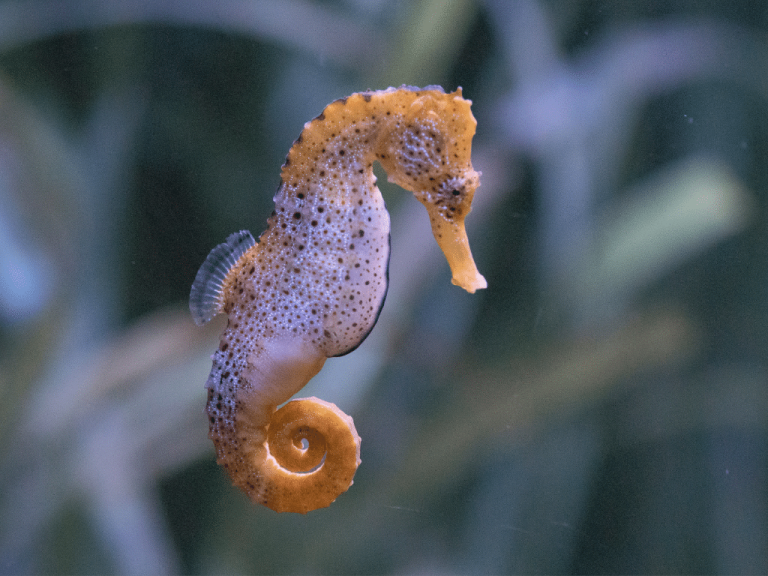At the bottom of the sea, especially in shallow waters, appears exceptionally bright and colorful. There are underwater plants surpassing those in forests and meadows on land; there are various animals frolicking among them. Attached to the seabed are red and white corals, resembling cultivated flowers and trees in a garden; clinging to the rocky reefs are red, white, and green sea anemones, also akin to garden flowers and plants. Describing this vibrant and colorful underwater scenery as a “crystal palace” is quite fitting.
One of the strange inhabitants of this crystal palace is the seahorse. These small-bodied (usually 15-30 centimeters long) fish have a head resembling that of a horse, hence the name “seahorse.” The tail of a seahorse is long, composed of multiple segments, and can flexibly bend and stretch, allowing it to bounce around. Its dorsal fin resembles a fan and is frequently waved to maintain balance. Their movements are graceful and lively.
Seahorses not only have unique appearances but also exhibit special reproductive behaviors. During the breeding season, the male seahorse’s side abdomen develops folds along the body’s midline, gradually forming a large “brood pouch.” The female seahorse then deposits eggs into the male seahorse’s brood pouch (females do not have brood pouches), typically numbering around a hundred eggs. The eggs undergo embryonic development within the brood pouch. During this period, a dense network of blood vessels forms inside the brood pouch, establishing close contact with the embryonic blood vessel network to supply nutrients during embryonic development. Once the young seahorses have fully developed, the male seahorse begins to give birth.
Why do seahorses exhibit such unique reproductive behavior? Primarily because they are longtime residents of shallow seabeds. Shallow seas are complex and dangerous, especially during the spring and summer seasons when various marine animals migrate from deep seas or open oceans to shallow waters for annual mating and reproduction. Therefore, the normally quiet shallow sea areas become particularly lively during this time. Meanwhile, interspecies competition for survival becomes intense. This not only leads to significant casualties among adult animals but also puts young animals at risk of predation. Large quantities of animal eggs, especially those just laid, become prime targets for predation. For example, out of millions of codfish eggs laid at once, only a tiny fraction may survive to become young fish. As a result, interspecies competition for survival intensifies from generation to generation. Some animals, like mouthbrooding catfish, carry all their eggs inside their mouths, while others, like skates, encase their eggs in spiny gelatinous capsules.
As longtime residents of shallow seas, seahorses have adapted ingeniously to protect their eggs. They have evolved from egg-laying to a stage resembling live birth. To prevent any egg loss, female seahorses deposit their eggs into the “brood pouch” of male seahorses. This way, the delicate young seahorses are no longer vulnerable to harm from other animals.

